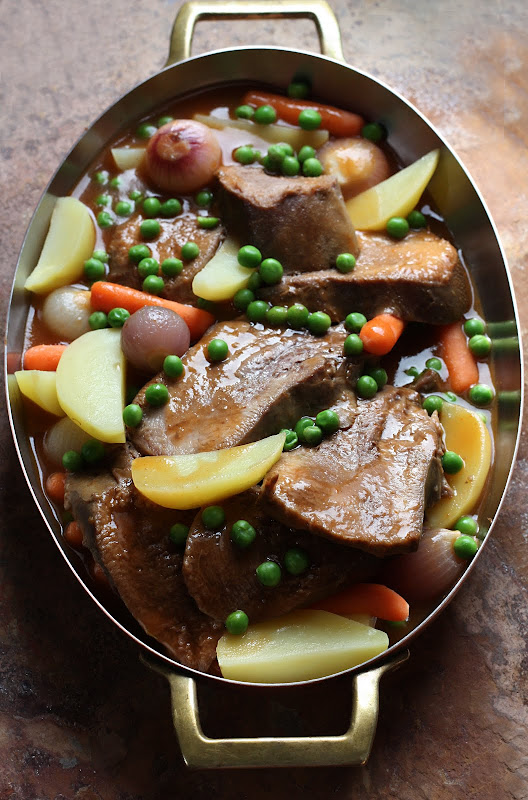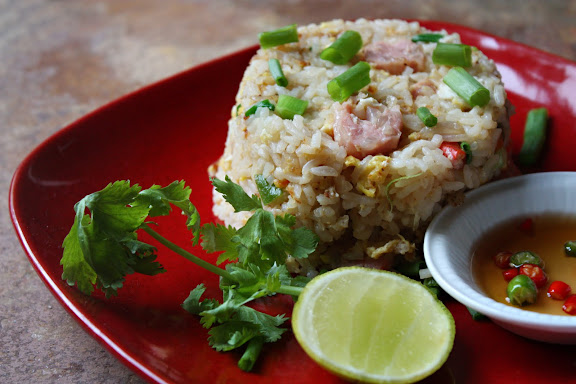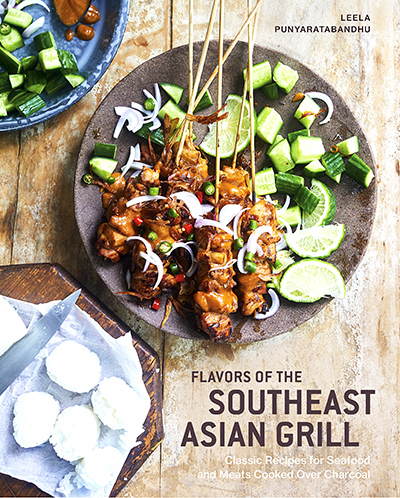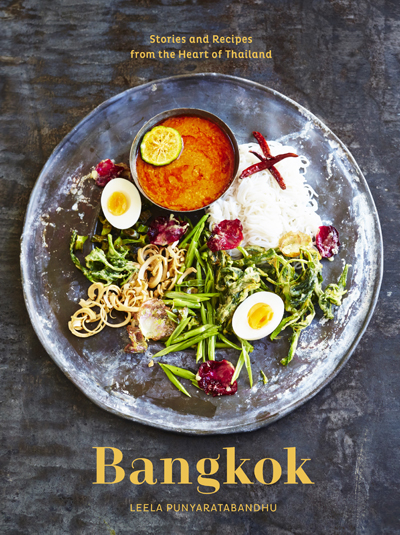
While the food blogosphere is all about beautiful holiday cookies this time of year, I’m giving you beef tongue. It’s really not about me being a holiday grouch (though I am); it’s just that this beef tongue stew is one of those things that remind me of home. I know it sounds odd, but this was one of my favorite things to eat growing up. So I thought I would add this to a list of my “homesick menu” after Mom’s Pork Chops with Crispy Garlic and Lemongrass and my aunt’s Soy-Braised Chicken Wings with Quail Eggs.

Put a hunk of beef tongue next to a dainty raspberry French macaron and the tongue would probably weep in self-pity. Beef tongue is not a cute food. I realize I’m stating the obvious here.
But I think the thought of preparing it is what scares a lot of people more than its appearance or the idea of eating it. After all, what’s not to like about beef tongue. It’s meaty. It’s beefy. It’s got great texture. Besides, all the great things that have been said about the bonelessness of bananas also apply to beef tongues.
People have different ways of preparing a beef tongue to use in a recipe. My favorite way is to drop the whole piece into a large pot, cover it up with water, add a couple of tablespoons of salt, and simmer away for 2-3 hours, replenishing the water and restoring the simmer occasionally along the way. At that point, the tough skin can be peeled off by hand easily, the tongue proper (you know, the part that flaps) is nice and tender, and the meaty part attached to the base of the tongue is only about 15 minutes of simmering away from being pot-roast tender.

After the tough skin has been peeled off, I always separate the tongue from its base. I like the texture of the tongue at this stage; for me it only needs to be heated through. If the tongue is cooked further along with the base (which still requires a bit more tenderizing at this point), the texture becomes mealy and unpleasant to me. This is also the reason I don’t ever cook the tongue in a slow or pressure cooker. But your mileage may vary.

Last time I asked Mom how she made her beef tongue stew, she wrote back, “One large tongue (prepared and cut into 1-inch thick slices), enough tomato juice to cover, American stew vegetables, fish sauce, dark soy, and lots of pepper. Oh, don’t forget butter.” (Butter was her secret ingredient.) I never had a chance to ask her to clarify it, and now I no longer have Mom around to ask for more information. I guess you and I are stuck with what I think she meant. It has worked for me so far. As you can see, this is no traditional western-style stew. Mom served it with rice. There would be, of course, a bowl of nam pla prik on the table for everybody.
My Mom’s Beef Tongue Stew Recipe
(Serves 6)
Printable Version

One 3-lb beef tongue, prepared as described above
1 quart tomato juice
3 large cloves garlic, peeled and minced
1 teaspoon ground white or black pepper
1 teaspoon sugar (I’ve found this to help balance out the acidity of the tomato juice)
4-5 medium low-starch, waxy potatoes, peeled, cut into wedges, and steamed
3-4 medium carrots, peeled, cut into chunks, steamed
3/4 cup frozen peas, quickly blanched
1/2 lb frozen pearl onions, quickly blanched
2 tablespoons butter
2 tablespoons fish sauce
Light soy sauce, to taste
2 tablespoons cornstarch mixed with 1/3 cup water
Place the tongue base pieces to a large pot. Cover them up with the tomato juice. Add the fish sauce, minced garlic, sugar, and pepper.
Bring the mixture to a boil; reduce the heat to a low simmer. Let the tongue stew, covered, for 15-20 minutes.
Add the butter to the pot along with the remainder of the tongue (i.e. the tongue proper) and the cooked vegetables; heat the whole thing through.
To serve, transfer the tongue pieces and the vegetables to a serving platter; keep them covered.
Thicken the sauce with the cornstarch mixture; adjust the consistency with water as needed.< Check seasoning. Add light soy sauce to taste. Pour the sauce over the tongue and vegetables on the serving plate.















